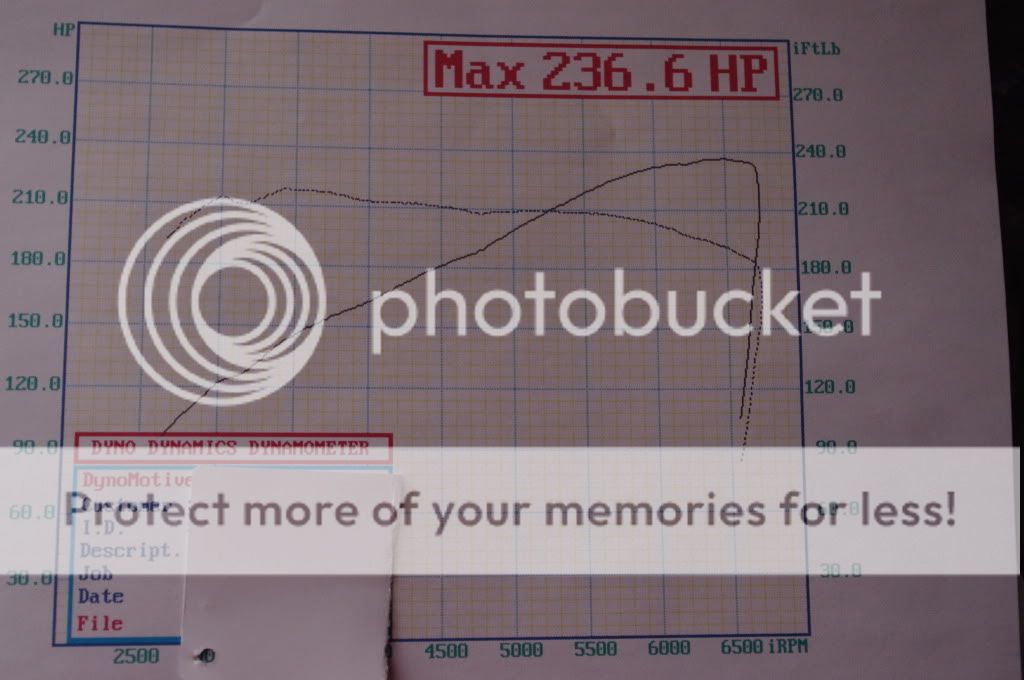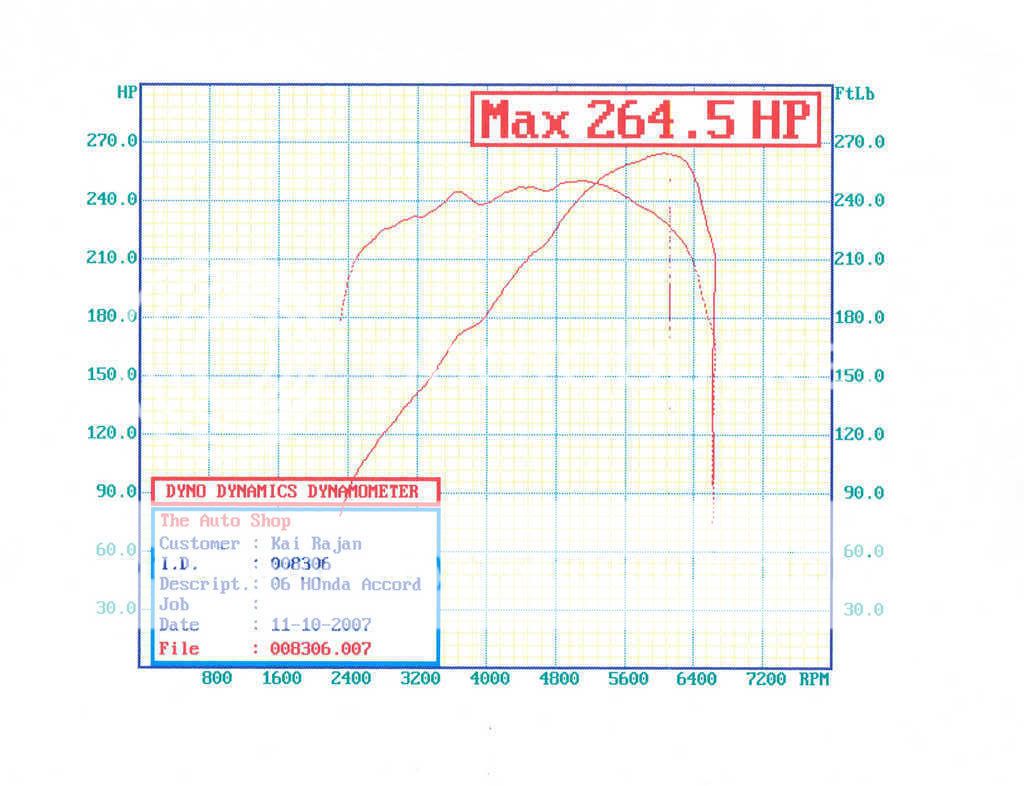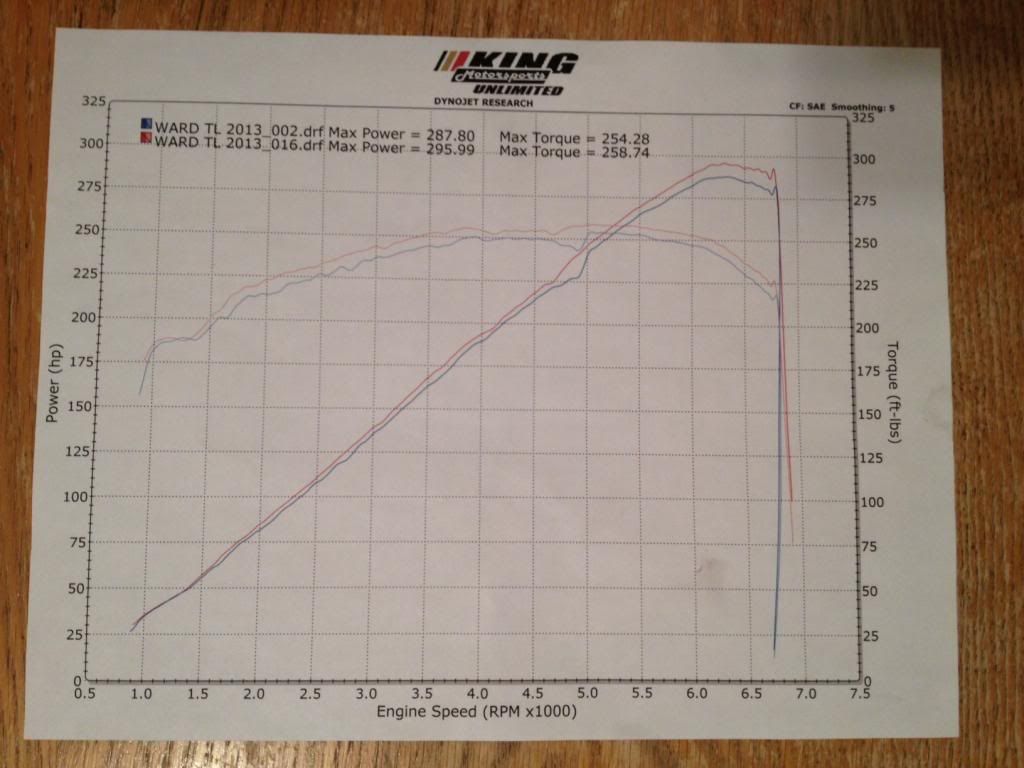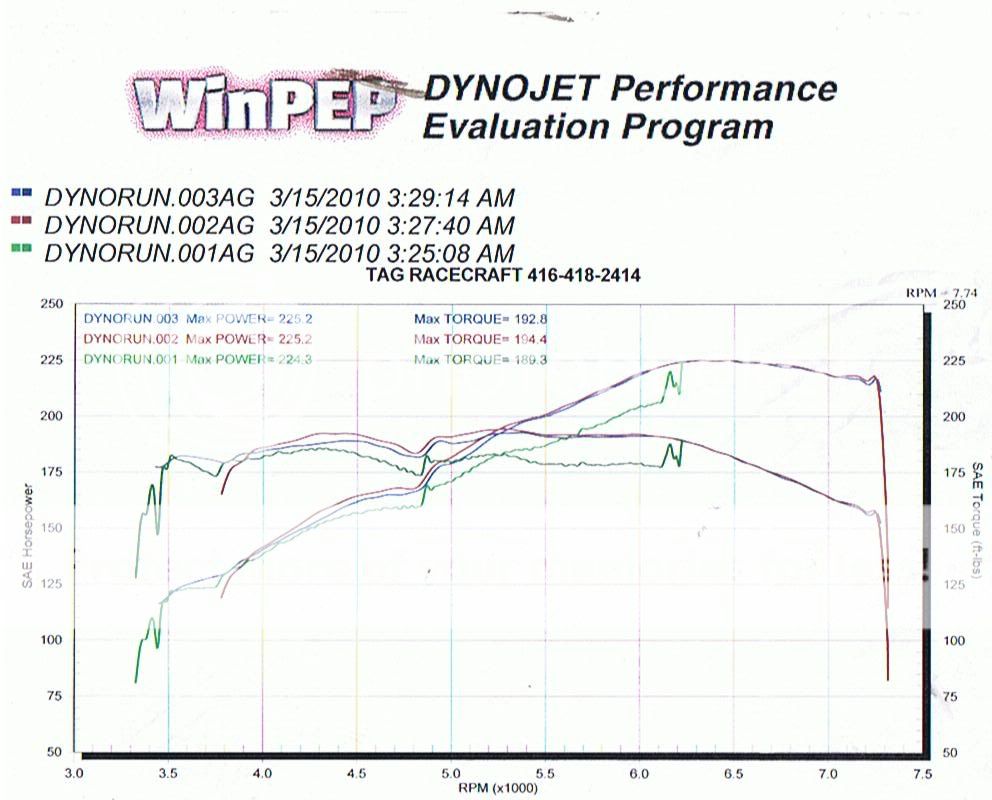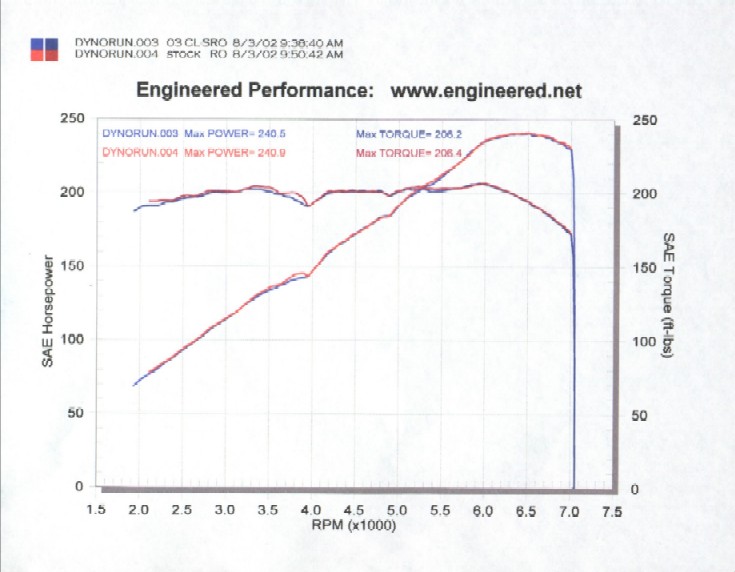TQ vs HP... 65-100ftlbs TQ gain from a J-Swap?
So it appears a mild build J36 stroker using OEM parts for about $5,000 can put down 290-320whp and 265-300ftlbs of torque and this retains the NSX transmission
although HP potential is roughly the same as an NSX, but the J36 torque is usually 60-100 ft.lbs higher.
NSX's with all the bolt-ons average only have 265whp/200tq. The J36 is really a massive power increase for N/A especially around 5500-7000 RPM where the nsx is still climbing and low on power and the J series is already flat at max power till redline the difference appears to be easily over 50-60whp / 75wtq under the curve...
Even a 350whp CTSC NSX only puts out 250wtq. (see link to dyno registry post #3 and #6 ) and potentially a mild build J series (280-310wtq)
A mild build J36 build can potentially put out almost as much TQ as a 400whp NSX turbo (320-330wtq).
Can anyone help me understand what the actual performance difference may be in acceleration if whp is similar but much higher tq?
Could one expect a 310whp / 290wtq from a stroker j36 in NSX to perform/accelerate just as fast as an average low boost CTSC 350whp/250wtq?
comparing both engines with bolt-ons and standalone EMS properly setup.
J36 stroker (j32 block with j37 crank all oem parts)
290-320whp with 260-300wtq
very flat torque curves some builds even make more TQ than HP
NSX engine 3.0 or 3.2
270-310whp with 200-220wtq
NSX 3.6 stroker 333whp 265wtq
http://www.nsxprime.com/forum/showthread.php/85793-3-6L-ScienceofSpeed-Engine-(NA-Stroker)
NSX average low boost CTSC 340-360whp 240-260wtq
http://www.nsxprime.com/forum/showthread.php/69409-Dyno-CTSC-6lb-kit-Autorotor-2005-NSX-T
http://www.nsxprime.com/forum/showthread.php/109312-NSX-Dyno-Library-Registry
yes an nsx engine can be built/stroked to 350whp/265wtq but that may cost 20k including the engine (god bless you if you get a bad build and it blows up) where the J36 stroker 300whp/280tq engine would be easily replaceable/built/repaired for around 5k including the engine cost.
There are also rumors/claims online of J36 build's pushing 350whp but i am yet find any dynos proving this. and many dynos are limited budget swaps that are not even properly tuned and with no bolt-ons or anything and they easily push 270whp/230lbs of torque which is just as good an NSX engine with all the bolt-ons.
Also take note when comparing dynos the j series make peak power very smoothly and over couple thousand rpm where the nsx engine usuallay only peaks for a couple hundred rpm. if you Analise the last 1500prm of the rev band The J-series below dynos below shows a solid 290-310hp from 5500-7000 where the NSX 3.6 SOS stroker in the link above shows 280-333whp over the same 5500-7000 rpm. thats big difference in power. The CTSC also has similar behavior 300-360whp from 6000-7500.
theres also the 60-100lb j-swap weight reduction to the rear of the NSX which is favorable as well. Especially if comparing that a CTSC is confirmed to add about 60lbs, that's roughly a 120-160lbs variable from J swap to C30-C32 w/ CTSC in the rear.
any thoughts?
thinking of putting the rare NSX engine in storage and going a beating up some J series for 100k miles until the day shall ever come that i may want to sell the NSX and put the c30 back in?
Although supposedly there are N/A J's pushing over 300TQ at the wheels, But I preferred to include links and dyno sheets from some realistic examples of J swaps power-band:
http://www.j32a.com/index.php?topic=1304.0
http://acurazine.com/forums/performance-parts-modifications-112/finally-dynod-minor-fap-lol-782787/
This guy Got 322whp and 292wtq (over 300whp from 5000rpm to redline) !!
http://www.j32a.com/index.php?topic=2303.15
<a href="http://s172.photobucket.com/user/tiago3/media/dyno_heads_cams_zpsaf431586_c507cdde02881fae2a7f61bc9bedf384d9d4b514.jpg.html" target="_blank"><img src="http://i172.photobucket.com/albums/w15/tiago3/dyno_heads_cams_zpsaf431586_c507cdde02881fae2a7f61bc9bedf384d9d4b514.jpg" border="0" alt=" photo dyno_heads_cams_zpsaf431586_c507cdde02881fae2a7f61bc9bedf384d9d4b514.jpg"/></a>
<a href="http://s172.photobucket.com/user/tiago3/media/P2R_AccordDyno.jpg.html" target="_blank"><img src="http://i172.photobucket.com/albums/w15/tiago3/P2R_AccordDyno.jpg" border="0" alt=" photo P2R_AccordDyno.jpg"/></a>
<a href="http://s172.photobucket.com/user/tiago3/media/60100.png.html" target="_blank"><img src="http://i172.photobucket.com/albums/w15/tiago3/60100.png" border="0" alt=" photo 60100.png"/></a>
<a href="http://s172.photobucket.com/user/tiago3/media/OC7xg59.png.html" target="_blank"><img src="http://i172.photobucket.com/albums/w15/tiago3/OC7xg59.png" border="0" alt=" photo OC7xg59.png"/></a>
So it appears a mild build J36 stroker using OEM parts for about $5,000 can put down 290-320whp and 265-300ftlbs of torque and this retains the NSX transmission
although HP potential is roughly the same as an NSX, but the J36 torque is usually 60-100 ft.lbs higher.
NSX's with all the bolt-ons average only have 265whp/200tq. The J36 is really a massive power increase for N/A especially around 5500-7000 RPM where the nsx is still climbing and low on power and the J series is already flat at max power till redline the difference appears to be easily over 50-60whp / 75wtq under the curve...
Even a 350whp CTSC NSX only puts out 250wtq. (see link to dyno registry post #3 and #6 ) and potentially a mild build J series (280-310wtq)
A mild build J36 build can potentially put out almost as much TQ as a 400whp NSX turbo (320-330wtq).
Can anyone help me understand what the actual performance difference may be in acceleration if whp is similar but much higher tq?
Could one expect a 310whp / 290wtq from a stroker j36 in NSX to perform/accelerate just as fast as an average low boost CTSC 350whp/250wtq?
comparing both engines with bolt-ons and standalone EMS properly setup.
J36 stroker (j32 block with j37 crank all oem parts)
290-320whp with 260-300wtq
very flat torque curves some builds even make more TQ than HP
NSX engine 3.0 or 3.2
270-310whp with 200-220wtq
NSX 3.6 stroker 333whp 265wtq
http://www.nsxprime.com/forum/showthread.php/85793-3-6L-ScienceofSpeed-Engine-(NA-Stroker)
NSX average low boost CTSC 340-360whp 240-260wtq
http://www.nsxprime.com/forum/showthread.php/69409-Dyno-CTSC-6lb-kit-Autorotor-2005-NSX-T
http://www.nsxprime.com/forum/showthread.php/109312-NSX-Dyno-Library-Registry
yes an nsx engine can be built/stroked to 350whp/265wtq but that may cost 20k including the engine (god bless you if you get a bad build and it blows up) where the J36 stroker 300whp/280tq engine would be easily replaceable/built/repaired for around 5k including the engine cost.
There are also rumors/claims online of J36 build's pushing 350whp but i am yet find any dynos proving this. and many dynos are limited budget swaps that are not even properly tuned and with no bolt-ons or anything and they easily push 270whp/230lbs of torque which is just as good an NSX engine with all the bolt-ons.
Also take note when comparing dynos the j series make peak power very smoothly and over couple thousand rpm where the nsx engine usuallay only peaks for a couple hundred rpm. if you Analise the last 1500prm of the rev band The J-series below dynos below shows a solid 290-310hp from 5500-7000 where the NSX 3.6 SOS stroker in the link above shows 280-333whp over the same 5500-7000 rpm. thats big difference in power. The CTSC also has similar behavior 300-360whp from 6000-7500.
theres also the 60-100lb j-swap weight reduction to the rear of the NSX which is favorable as well. Especially if comparing that a CTSC is confirmed to add about 60lbs, that's roughly a 120-160lbs variable from J swap to C30-C32 w/ CTSC in the rear.
any thoughts?
thinking of putting the rare NSX engine in storage and going a beating up some J series for 100k miles until the day shall ever come that i may want to sell the NSX and put the c30 back in?
Although supposedly there are N/A J's pushing over 300TQ at the wheels, But I preferred to include links and dyno sheets from some realistic examples of J swaps power-band:
http://www.j32a.com/index.php?topic=1304.0
http://acurazine.com/forums/performance-parts-modifications-112/finally-dynod-minor-fap-lol-782787/
This guy Got 322whp and 292wtq (over 300whp from 5000rpm to redline) !!
http://www.j32a.com/index.php?topic=2303.15
<a href="http://s172.photobucket.com/user/tiago3/media/dyno_heads_cams_zpsaf431586_c507cdde02881fae2a7f61bc9bedf384d9d4b514.jpg.html" target="_blank"><img src="http://i172.photobucket.com/albums/w15/tiago3/dyno_heads_cams_zpsaf431586_c507cdde02881fae2a7f61bc9bedf384d9d4b514.jpg" border="0" alt=" photo dyno_heads_cams_zpsaf431586_c507cdde02881fae2a7f61bc9bedf384d9d4b514.jpg"/></a>
<a href="http://s172.photobucket.com/user/tiago3/media/P2R_AccordDyno.jpg.html" target="_blank"><img src="http://i172.photobucket.com/albums/w15/tiago3/P2R_AccordDyno.jpg" border="0" alt=" photo P2R_AccordDyno.jpg"/></a>
<a href="http://s172.photobucket.com/user/tiago3/media/60100.png.html" target="_blank"><img src="http://i172.photobucket.com/albums/w15/tiago3/60100.png" border="0" alt=" photo 60100.png"/></a>
<a href="http://s172.photobucket.com/user/tiago3/media/OC7xg59.png.html" target="_blank"><img src="http://i172.photobucket.com/albums/w15/tiago3/OC7xg59.png" border="0" alt=" photo OC7xg59.png"/></a>
Last edited:






